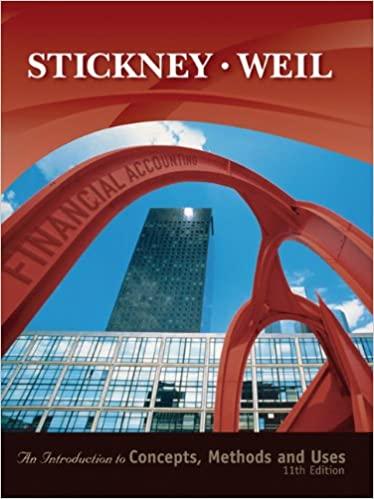Analyzing changes in accounts receivable. Selected data from the financial statements of Sears, a retail department store
Question:
Analyzing changes in accounts receivable. Selected data from the financial statements of Sears, a retail department store chain, appear below (amounts m millions).
Year 4 Year 5 Year 6 Year 7 Balance Sheet Accounts and Notes Receivable, net of allowance for uncollectible accounts of $1,113 at the end of Year 6,
$974 at the end of Year 7,
$760 at the end of Year 8, and $686 at the end of Year 9 $19,843 $17,972 $18,033 $17,317 Income Statement Sales on Account $39,953 $39,484 $40,937 Bad Debt Expense $ 1,287 $ 871 $ 884
a. Prepare journal entries for Year 7. Year 8. and Year 9 for the following events:
(1) Sales on account
(2) Bad debt Expense
(3) Write-off of actual uncollectible accounts
(4) Collection of cash from customers
b. Compute the amount of the following ratios:
(1) Accounts receivable turnover ratio for Year 7. Year 8. and Year 9
(2) Bad debt expense divided by sales on account for Year 7, Year 8, and Year 9
(3) Allowance for uncollectible accounts divided by accounts receivable (gross) at the end of Year 7. Year 8. and Year 9
(4) Write-offs of actual uncollectible accounts divided by average accounts receivable
(gross) for Year 7, Year 8. and Year 9 C. What do the ratios computed in part b suggest about the collection experience of Sears during the three-year period?
Step by Step Answer:

Financial Accounting Introduction To Concepts Methods And Uses
ISBN: 9780324222975
11th Edition
Authors: Clyde P. Stickney, Roman L. Weil





